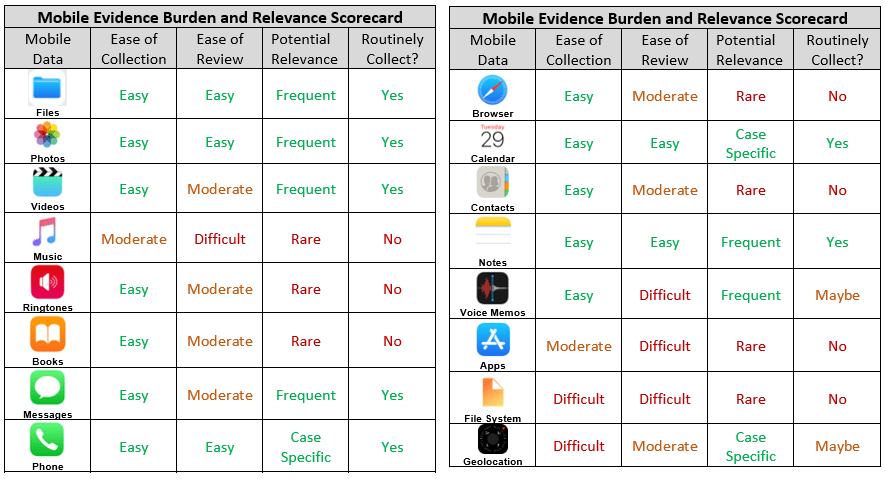Mobile Collection: It’s Not Just for iPhones Anymore, Part Four
Editor’s Note: Tom O’Connor is a nationally known consultant, speaker, and writer in the field of computerized litigation support systems. He has also been a great addition to our webinar program, participating with me on several recent webinars. Tom has also written several terrific informational overview series for CloudNine, including his most recent one, DOS and DON’TS of a 30(b)(6) Witness Deposition. Now, Tom has written another terrific overview regarding mobile device collection titled Mobile Collection: It’s Not Just for iPhones Anymore that we’re happy to share on the eDiscovery Daily blog. Enjoy! – Doug
Tom’s overview is split into four parts, so we’ll cover each part separately. The first part was last Thursday, the second part was Monday and the third part was Wednesday, here’s the fourth and final part.
Conclusions
So, when you think of smart phone collection be sure to ask what OS you going to encounter. Android phones are market leaders both here in the US and worldwide and offer corporate archiving solutions that are second to none. Your litigation opponent might actually have the droid you are looking for.
And, why is that important? Because we’re seeing more cases where mobile device data is relevant than ever. As I mentioned in my Millennials series last summer, Americans send about 8.5 billion texts every day! Texts and other mobile data are routinely relevant in just about every type of litigation case.
And, we’re certainly seeing more cases where mobile device data is figuring prominently in court rulings. Here are some cases covered by eDiscovery Daily in just the past year regarding mobile devices and (in some cases) consideration of sanctions for failing to preserve mobile device data:
- Herzig v. Arkansas Foundation for Medical Care, Inc., No. 2:18-CV-02101 (W.D. Ark. July 3, 2019)
- Wilmoth v. Deputy Austin Murphy, No. 5:16-CV-5244 (W.D. Ark. Aug. 7, 2019)
- NuVasive, Inc. v. Kormanis, No. 1:18CV282 (M.D.N.C. Mar. 13, 2019)
- DriveTime Car Sales Company, LLC v. Pettigrew, No.: 2:17-cv-371 (S.D. Ohio Apr. 18, 2019)
- Siemers v. BNSF Railway Co., No. 8:17-cv-360 (D. Neb. Apr. 8, 2019)
- Commonwealth v. Jones, SJC-12564 (Mass. Mar. 6, 2019)
- Paisley Park Enter., Inc. v. Boxill, No. 17-cv-1212 (WMW/TNL), (D. Minn. Mar. 5, 2019)
- Santana v. MKA2 Enterprises, Inc., No. 18-2094-DDC-TJJ (D. Kan. Jan. 8, 2019)
The good news is that you’ve now learned about some terrific resources to preserve that mobile device data and hopefully avoid sanctions in your own cases, regardless of whether the device is Apple or Android.
So, what do you think? Are you having to increasingly address issues associated with mobile device discovery? As always, please share any comments you might have or if you’d like to know more about a particular topic.

Sponsor: This blog is sponsored by CloudNine, which is a data and legal discovery technology company with proven expertise in simplifying and automating the discovery of data for audits, investigations, and litigation. Used by legal and business customers worldwide including more than 50 of the top 250 Am Law firms and many of the world’s leading corporations, CloudNine’s eDiscovery automation software and services help customers gain insight and intelligence on electronic data.
Disclaimer: The views represented herein are exclusively the views of the author, and do not necessarily represent the views held by CloudNine. eDiscovery Daily is made available by CloudNine solely for educational purposes to provide general information about general eDiscovery principles and not to provide specific legal advice applicable to any particular circumstance. eDiscovery Daily should not be used as a substitute for competent legal advice from a lawyer you have retained and who has agreed to represent you.




